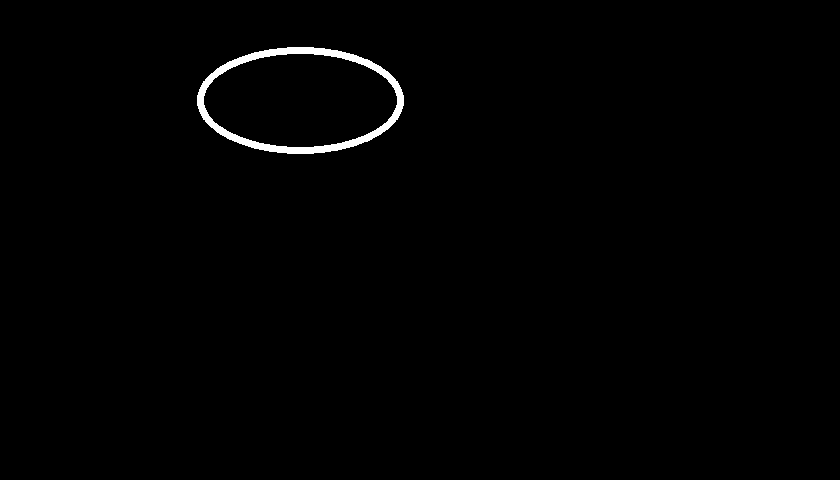Ellipse
Creating an Ellipse
You can create an ellipse by using the ellipse keyword followed by the axes and the position of the ellipse. For example, to create and ellipse with axes 100 and 50 at position (300, 100), you can use the following code:
Output:

In the above example, the position keyword is used to specify the position of the ellipse. The axes keyword is used to specify the length of the major and minor axes of the ellipse. The color keyword is used to specify the color of the ellipse and the thickness keyword is used to specify the thickness of the ellipse.
Properties
The ellipse has the following properties:
position: The position of the ellipse. The position is specified in the format
X, Y.axes: The length of the major and minor axes of the ellipse. The axes are specified in the format
X, Y.color: The color of the ellipse. The color is specified in the format
R, G, B.thickness: The thickness of the ellipse. The default thickness is 1.
angle: The angle of the ellipse. The angle is specified in degrees.
startAngle: The start angle of the ellipse. The start angle is specified in degrees.
endAngle: The end angle of the ellipse. The end angle is specified in degrees.
fillColor: The fill color of the ellipse. The fill color is specified in the format
R, G, B. It can be set tonoif it is inherited from an ellipse that has fill color and the current object doesn't want to inherit it.
Conclusion
In this article, we have learned about the ellipse and how to create an ellipse using the ellipse keyword. We have also learned about the properties of the ellipse and how to use them to customize the appearance of the ellipse.